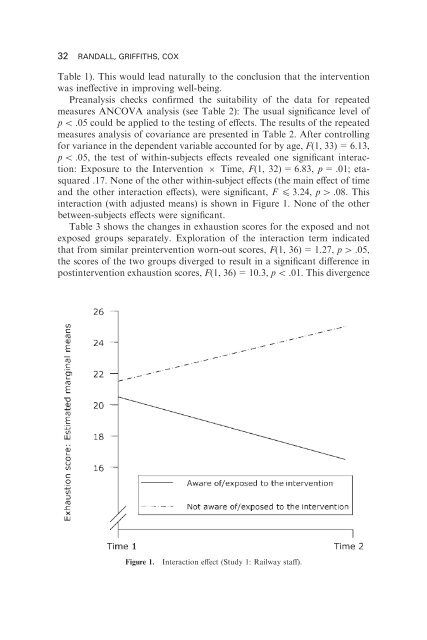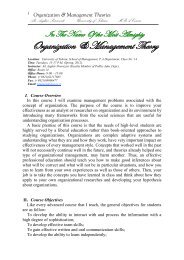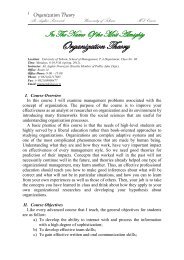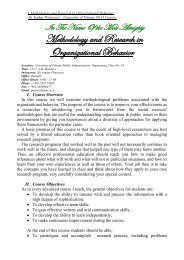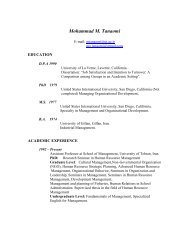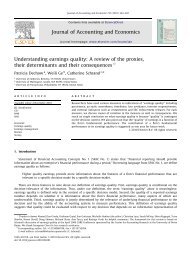Evaluating organizational stress-management interventions using ...
Evaluating organizational stress-management interventions using ...
Evaluating organizational stress-management interventions using ...
Create successful ePaper yourself
Turn your PDF publications into a flip-book with our unique Google optimized e-Paper software.
32 RANDALL, GRIFFITHS, COX<br />
Table 1). This would lead naturally to the conclusion that the intervention<br />
was ineffective in improving well-being.<br />
Preanalysis checks confirmed the suitability of the data for repeated<br />
measures ANCOVA analysis (see Table 2): The usual significance level of<br />
p 5 .05 could be applied to the testing of effects. The results of the repeated<br />
measures analysis of covariance are presented in Table 2. After controlling<br />
for variance in the dependent variable accounted for by age, F(1, 33) = 6.13,<br />
p 5 .05, the test of within-subjects effects revealed one significant interaction:<br />
Exposure to the Intervention 6 Time, F(1, 32) = 6.83, p = .01; etasquared<br />
.17. None of the other within-subject effects (the main effect of time<br />
and the other interaction effects), were significant, F 4 3.24, p 4 .08. This<br />
interaction (with adjusted means) is shown in Figure 1. None of the other<br />
between-subjects effects were significant.<br />
Table 3 shows the changes in exhaustion scores for the exposed and not<br />
exposed groups separately. Exploration of the interaction term indicated<br />
that from similar preintervention worn-out scores, F(1, 36) = 1.27, p 4 .05,<br />
the scores of the two groups diverged to result in a significant difference in<br />
postintervention exhaustion scores, F(1, 36) = 10.3, p 5 .01. This divergence<br />
Figure 1.<br />
Interaction effect (Study 1: Railway staff).


